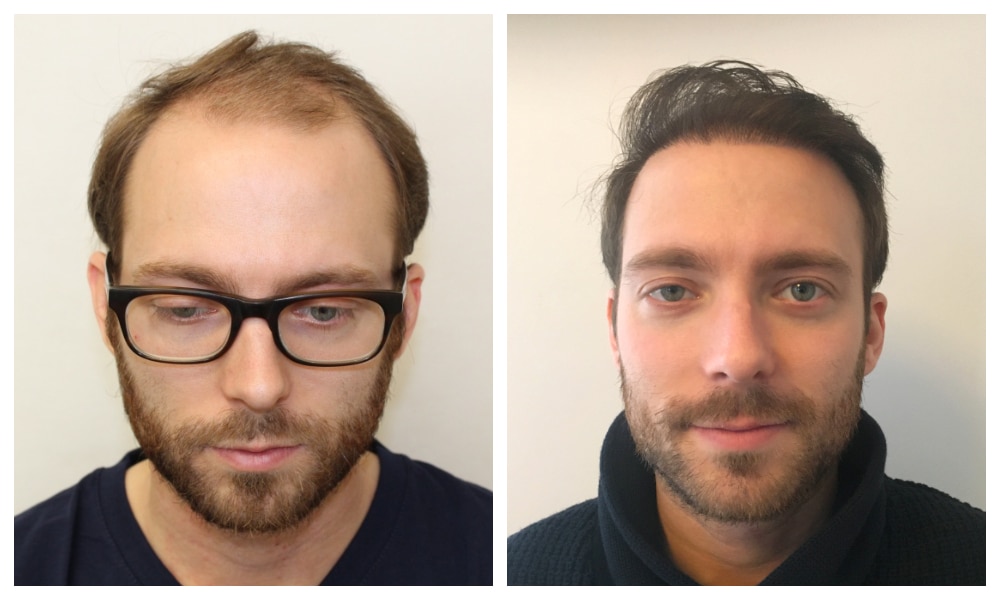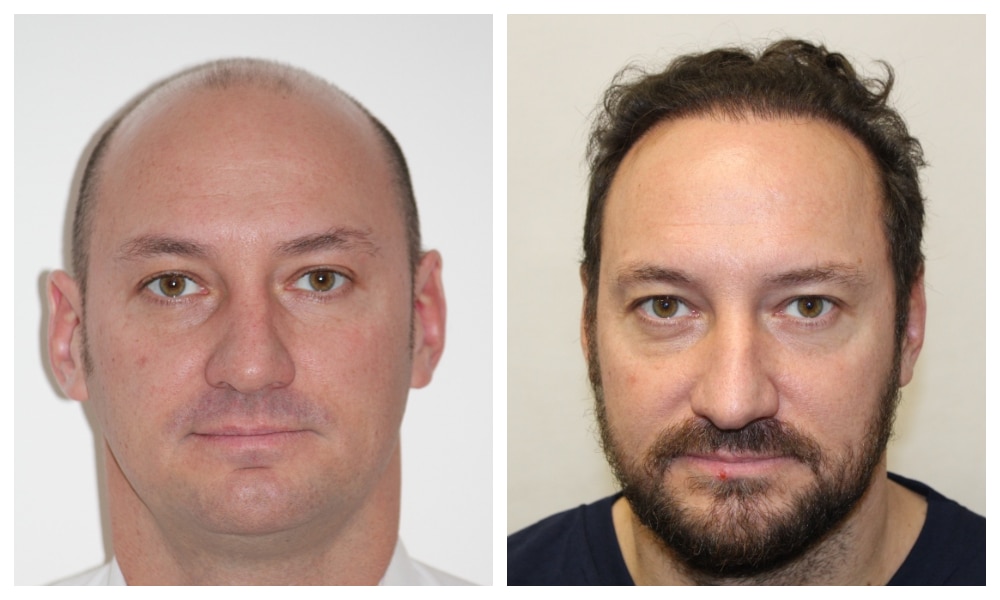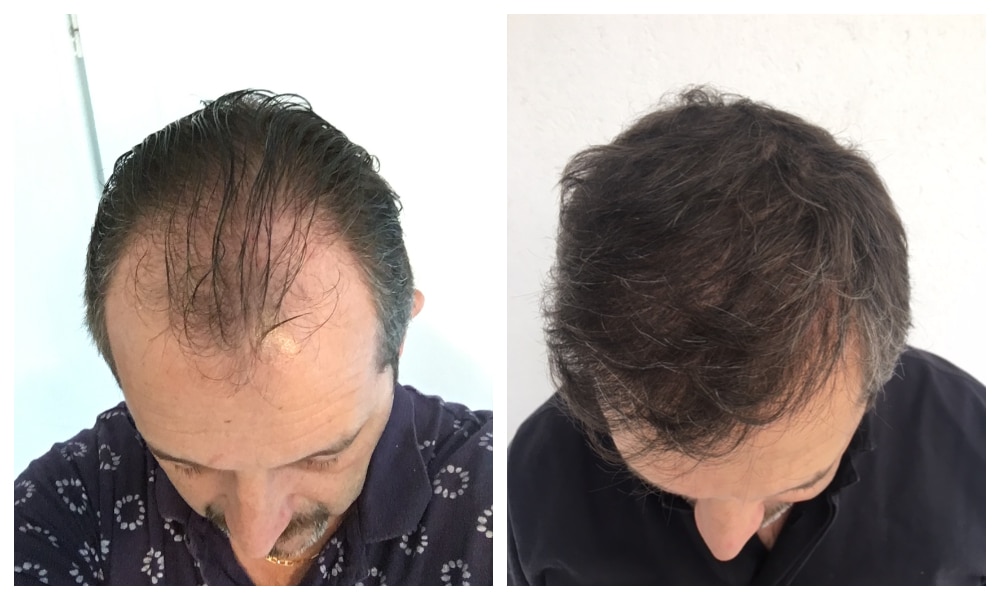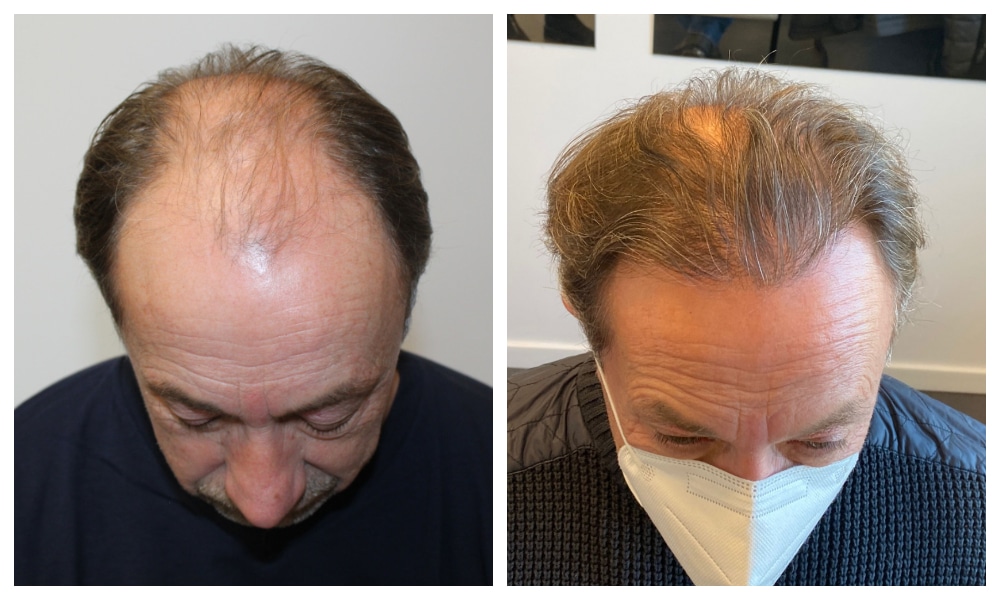Hairline Transplant: All You Need to Know in 2025
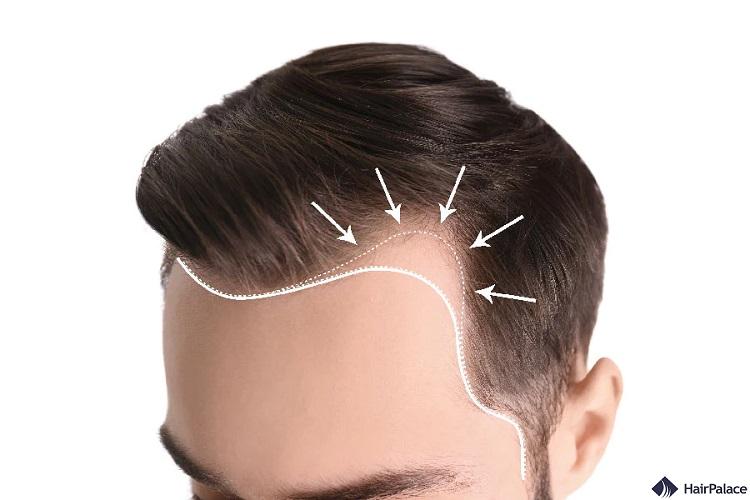
A hairline transplant is an innovative procedure that can reverse time and restore your hairline to its former glory.
The surgery involves designing a natural-looking hairline, takes several hours, and requires a recovery period of a few weeks, with full results visible in 12-15 months.
Choosing an experienced surgeon, and proper hairline design are crucial to minimize risks and achieve optimal outcomes.
This article will explore everything you need to know about hairline transplant surgery.
We’ll explore the average costs involved and showcase before and after pictures to help you see what results you can expect.
- What is it?
- Does a hair transplant last?
- The two main methods
- Which is better?
- Cost
- Before and after
- Important questions to ask yourself
What is a hairline transplant?
This type of hair transplant is a surgical procedure that uses your own hair to recreate and restore your receding hairline to its former glory.
Also known as hairline restoration, the procedure treats hair loss conditions of various types and severities.
The results are incredibly natural-looking and give off the appearance of a fuller, thicker head of hair following recovery.
Different techniques can be used in hair transplant surgery, ensuring your treatment is tailor-made for your circumstances.
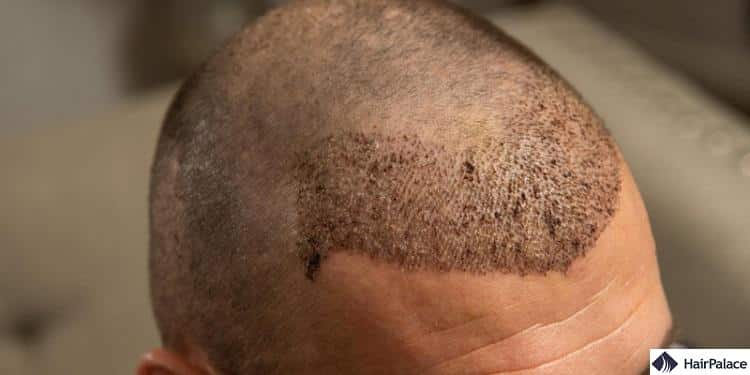
Generally, hair transplantation is a safe, highly effective procedure that can correct otherwise permanent hair loss. The implanted hair will be resilient and won’t fall out in the future.
But, like any medical treatment, there are some things to be mindful of.
Results will ultimately depend on your hair type, the extent of hair loss, the size of your surgery, and your diligence during aftercare.
Additionally, you need a highly skilled surgeon with years of experience to achieve the best possible results.
You can find out if you’re an ideal candidate for hairline transplantation by attending a consultation.
During this time, a specialist will examine your hairline, answer all your questions, and offer recommendations on the best course of treatment.
Does a hair transplant last?
A hair transplant is a permanent solution to hair loss conditions when performed correctly.
Because donor hair used during the procedure is often resistant and resilient, they have a much higher chance of staying in place.
That said, a variety of different factors, including lifestyle habits, age, general health, as well as your genetics, can impact the longevity of the treatment.
As such, you must be realistic about what can and can’t be done to help your hair loss.
The two main methods used for hairline transplantation
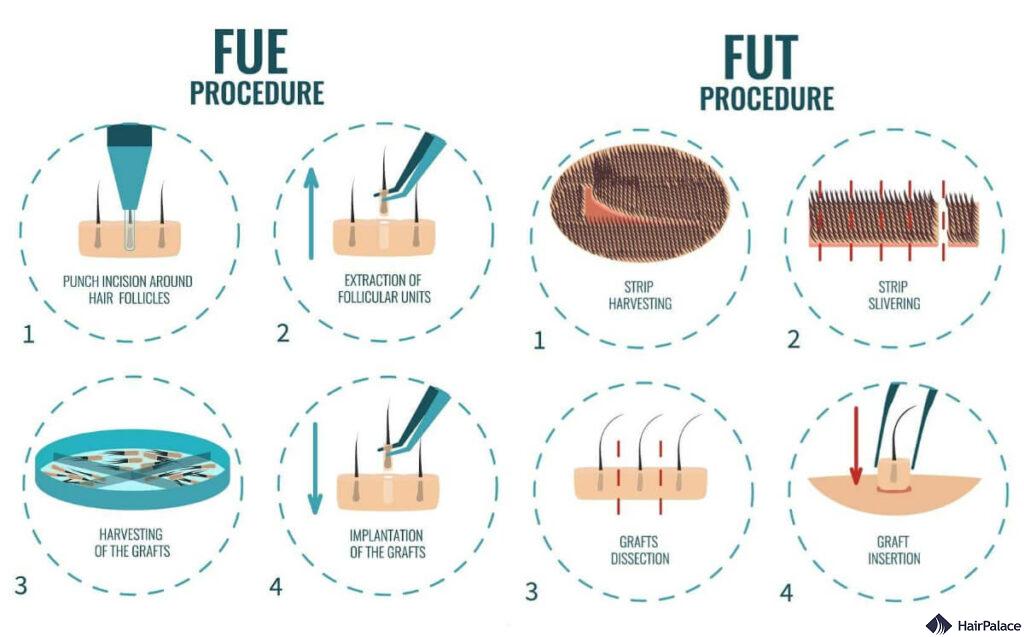
- FUE hair transplant: Follicles are taken individually, one by one, leaving no scarring. A FUE hair transplant promises permanent results with a quick recovery and minimal discomfort.
The hair transplant surgeon implants follicles strategically, so the transplanted hair recreates a natural-looking hairline. - FUT hair transplant: The hair transplant surgeon removes a strip of hair follicles from the donor site, follicles are then separated and implanted into the balding regions.
It is a much more invasive technique that often leaves a noticeable hair transplant scar along the donor area where follicles have been extracted.
Which hairline transplant method is better?
While both FUT and FUE are popular and effective, each hair transplant surgery has advantages and disadvantages.
The main advantage of undergoing FUT surgery is that it is often much cheaper and can treat more significant areas of thinning hair in one session.
That said, it is an invasive option and will leave a visible scar in the donor area of the hair, which is especially noticeable if the hair is kept short.
Conversely, FUE promises a quicker recovery with no visible scarring and stunning results.
However, this all comes at a price, and FUE is perhaps one of the more expensive hair transplant methods on the market.
You will find out which method suits your needs best and what a hair transplant involves during a consultation with your surgeon.
How much do hairline transplants cost?
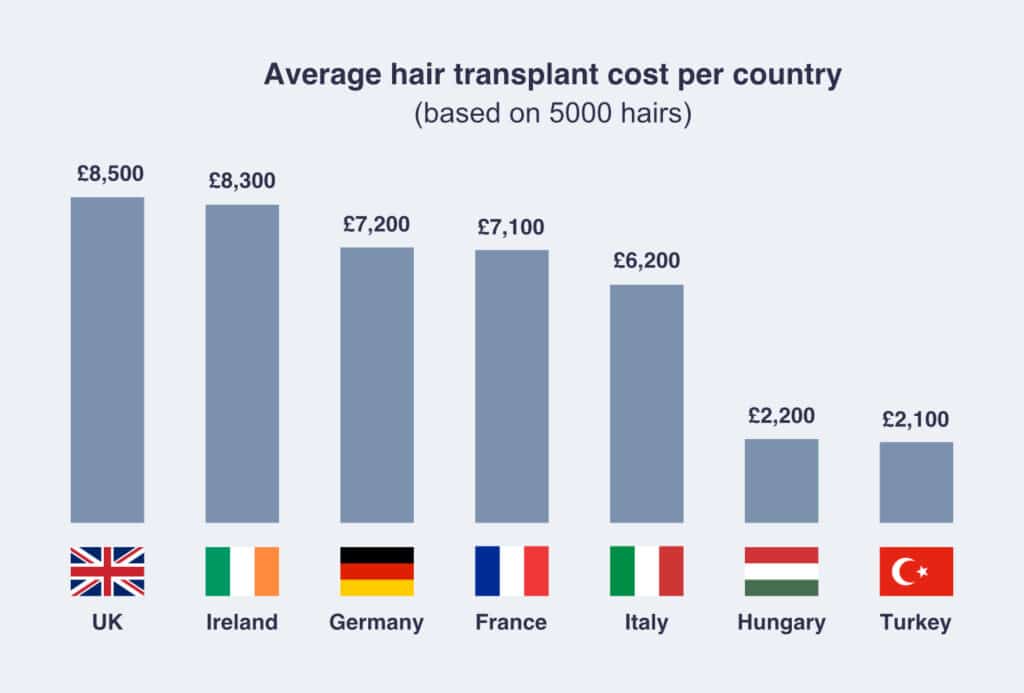
Cost can be one of the deciding factors on what type of treatment you get and where. Generally speaking, hairline transplants can range from £2,000 to £15,000, depending on several factors.
The most important of which is, of course – the size and scale of the procedure. If you have extensive thinning or baldness and require more grafts, then the price of the operation will increase.
Additionally, you need to consider the reputation of the hair transplant surgeon, staff, clinic, and location.
Understandably, you will often pay a premium if the clinic has highly skilled hair transplant surgeons and staff with years of experience.
That said, this added cost for experience is generally worth it if it means having a natural hairline.
Many clinics offer competitive packages and payment plans that can make the procedure much more affordable.
You may also be offered a free consultation with a surgeon to ask questions, and undergo an examination, to understand the procedure’s benefits.
Hairline transplant before and after
Important questions to ask yourself before a hair transplant for hairline
You will likely have many questions before committing to a hair transplant.
Below are some of the most important questions and information you will need to determine whether you’re an ideal candidate for the procedure and what results you’re likely to expect.
How low should your hairline be?
Four main categories of hairline prompt people to undergo hairline transplantation. These include:
- Your hairline has almost completely vanished
- It has formed an “M” shape, and the temples have no noticeable growth.
- It has retreated into the middle of the scalp
- It has become noticeably thin.
The majority of people who opt for hairline transplants do so because they suffer from hair loss conditions.
These can be hereditary conditions like androgen alopecia (male pattern baldness) to autoimmune disorders like alopecia areata, all of which can contribute to baldness.
To properly diagnose the stage and extent of your condition, you should consult with a hair transplant surgeon.
How much hair do you have left?
The success of both FUE and FUT hair transplants relies on how much donor hair you have on the sides and back of your head. That’s why younger patients can often achieve better results.
If you don’t have sufficient hair graft to extract, you may need to be realistic about the extent of coverage your hair transplant can recreate.
Is your receding hairline likely to progress?
A hair transplant surgeon will advise waiting until your hair loss has stagnated before proceeding with your procedure.
That’s because if you are still losing your hair, you might continue to lose hair and require touch-up procedures.
If your original hair continues to fall out after your transplant, it may distort or detract from achieving a natural hairline on your scalp.
By getting a hair transplant too early, you’re leaving yourself open to further distress. Our advice is simple – wait.
Last medically reviewed on January 2nd, 2025
- Shapiro R, Shapiro P. Hairline design and frontal hairline restoration. Facial Plastic Surgery Clinics. 2013 Aug 1;21(3):351-62.https://doi.org/10.1016/j.fsc.2013.06.001
- Shapiro R. Creating a natural hairline in one session using a systematic approach and modern principles of hairline design. International Journal of Cosmetic Surgery and Aesthetic Dermatology. 2001 Jun 1;3(2):89-99.https://doi.org/10.1089/153082001753231018
- Rodman R, Sturm AK. Hairline restoration: difference in men and woman—length and shape. Facial Plastic Surgery. 2018 Apr;34(02):155-8.https://doi.org/10.1055/s-0038-1636905
- Norwood O, Taylor BJ. Hairline design and placement. Journal of Dermatologic Surgery & Oncology. 1991 Jun 1;17(6).
- Ende K. Hairline Lowering: An Evolving Technique. Advances in Cosmetic Surgery. 2021 May 1;4(1):217-24.https://doi.org/10.1016/j.yacs.2021.01.007
- Epstein JS, Epstein GK. Surgical hairline advancement: patient candidacy and best techniques. Hair Transplant Forum International 2018 Sep 1 (Vol. 28, No. 5, pp. 184-187). Hair Transplant Forum International.https://doi.org/10.33589/28.5.0184

